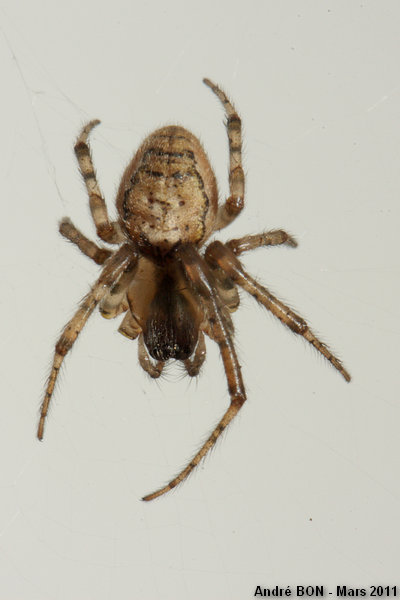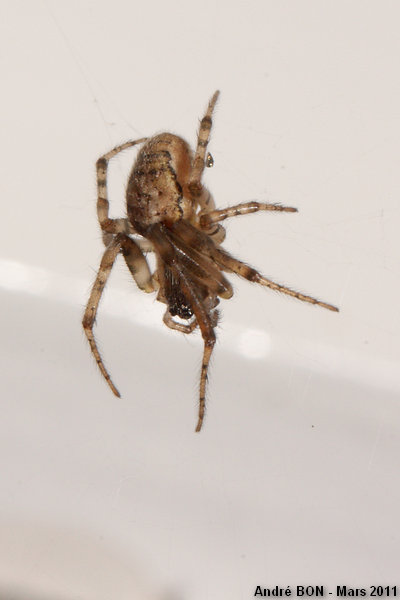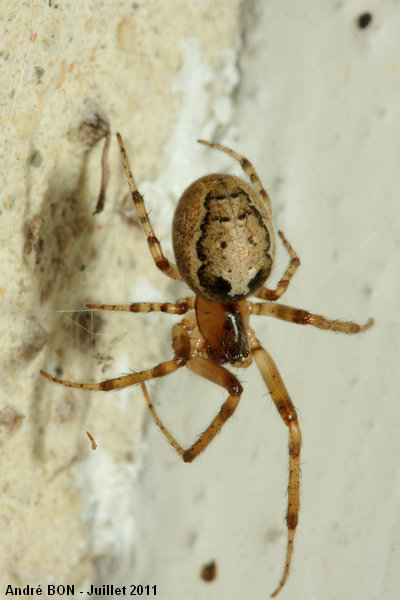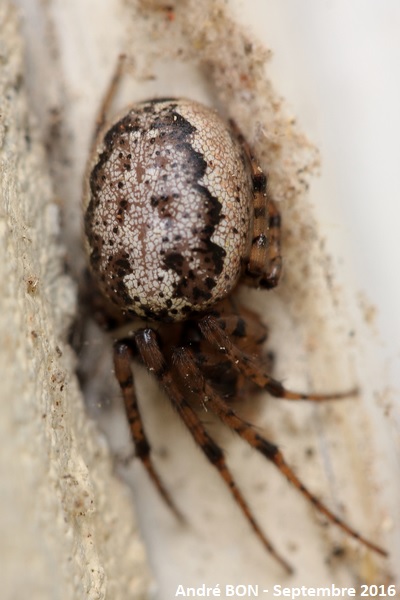





| Zygiella x-notata (Clerk, 1757) |






|
|
Scientific name: Zygiella x-notata (Clerk, 1757) Common name: French name: Zygielle des fenêtres, Épeire des fenêtres. Order: Araneae Family: Araneidae Size: 7 mm for the female and about 5 mm for the male. Biotope: Inside or near buildings, windows, railings, road-sign panels and garden shrubs. Web: Classical orb-web with two missing sectors. The thread in the middle is a signalling thread leading to the spider's hideout. Observation period: July to December in temperate zones, all year in hot zones. Geographic area: Worldwide. |
The Zygiella x-notata has a dark triangle-shaped pattern on the head. The abdomen has brown, yellow and grey marks. The legs are brown and circled with black. You can easily identify its web by its missing sector. In autumn, the Zygiella lays eggs in silk cocoons, hidden behind a window shutter or in a beam corner. The small spider will hatch out in spring. Zygiella atrica also build webs with one missing sector. However it is found far from human buildings in bushes or at rocky places. The general colour is rather dark brown. The male's pedipalps are very long. Parazygiella montana, as indicated by its scientific name, is rather found in mountain areas. You will find it among vegetation and you can tell apart with its sternum (on the underside, between the legs) which is totally black. Other Zygiella (or members of similar genus) have a pale-coloured centre of the sternum. Stroemiellus stroemi is observed on tree trunks and sometimes on walls. You can tell the female apart with its typical epigyne with a long scape. |
| [To know more about the Zygiella x-notata] [Next picture] [Top] |

|
This Zygiella x-notata's web was almost invisible in one outside corner of the kitchen's window. I have just seen it early in the morning with the horizontal sun rays. I have been able to tell the species before seeing the spider as the web's missing sector was very visible. This Zygiella x-notata was used to walking out of its hide only at night. Then, I have gone out, in the dark, with my camera and my flash to shoot some close-up pictures. |
| [To know more about the Zygiella x-notata] [Next picture] [Previous picture] [Top] |

|
During the day, this Zygiella x-notata was used to hiding in a small crevice in the wall. |
| [To know more about the Zygiella x-notata] [Next picture] [Previous picture] [Top] |

|
Now I just need to wait one damp Autumn day to take a picture of a beautiful web covered with dew. |
| [To know more about the Zygiella x-notata] [Next picture] [Previous picture] [Top] |

|
Here is a male observed on my garage's door. |
| [To know more about the Zygiella x-notata] [Next picture] [Previous picture] [Top] |

|
Close-up view of a female observed at a short distance from the above displayed male. |
| [To know more about the Zygiella x-notata] [Previous picture] [Top] |

|
Here is a picture showing both male and female. I kept it only to be able to compare their respective sizes because it lacks of sharpness on the female. |